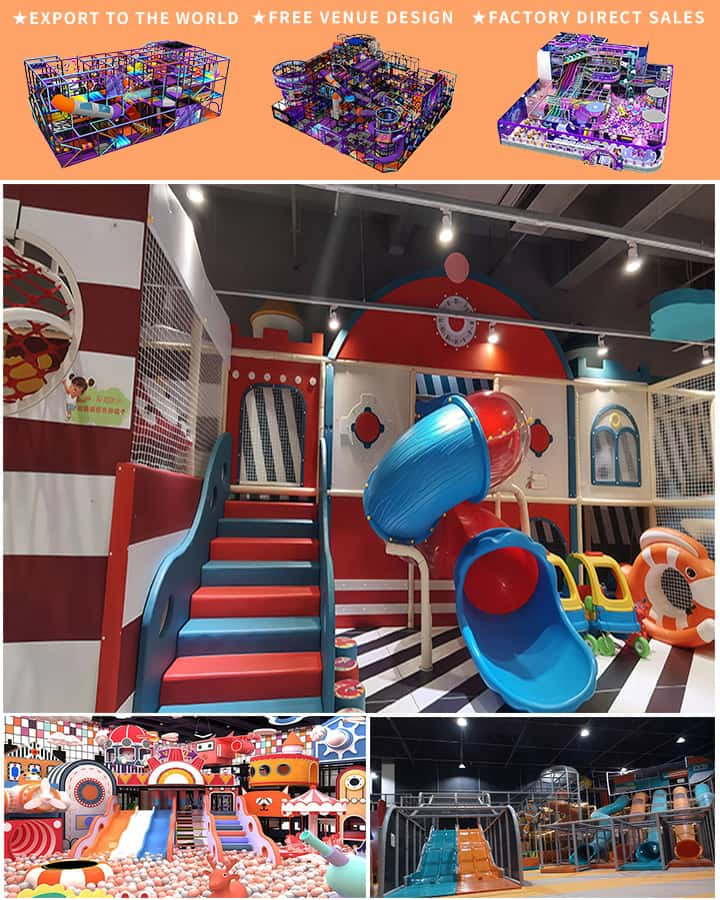Kids soft play areas have become a staple in family entertainment centers, offering young children a safe and engaging environment for hours of fun. These spaces are meticulously designed with age-appropriate equipment that encourages physical activity, social interaction, and imaginative play. Whether you’re a parent planning your child’s next adventure or an operator looking to create the perfect play space, this guide will walk you through everything you need to know about kids soft play.
What is Kids Soft Play?
Kids soft play areas are specially designated, padded environments where children can engage in various forms of play. These areas often include climbing structures, ball pits, slides, tunnels, and obstacle courses—all constructed from soft materials to reduce the risk of injury. The goal is to offer a mix of active and imaginative play while ensuring maximum safety.
Benefits of Kids Soft Play
Physical Development
Soft play areas promote gross motor skills such as climbing, balancing, and jumping. These activities help develop muscle strength, coordination, and overall physical fitness.
Social Interaction
Soft play environments provide excellent opportunities for children to interact with their peers. Shared experiences and cooperative games foster important social skills like teamwork, sharing, and communication.
Cognitive Growth
Engaging in imaginative play helps stimulate children’s cognitive development. Role-playing and creative games enhance problem-solving abilities, creativity, and critical thinking.

Safe and Supervised
With padded floors and walls, plus trained staff supervision, parents can have peace of mind knowing their children are playing in a safe environment.
Key Features of Soft Play Areas
Climbing Structures
Climbing walls and jungle gyms are fundamental elements of any soft play area. They challenge children’s physical capabilities and build confidence as they reach new heights.
Ball Pits
These colorful pools filled with soft plastic balls invite kids to jump in and explore. Ball pits are not only fun but also great for sensory stimulation.
Slides
From gentle slopes to exhilarating drops, slides add an element of excitement. They encourage movement and offer a thrilling end to climbing adventures.
Tunnels and Obstacle Courses
Navigating through tunnels and over obstacles enhances coordination and spatial awareness. These features make soft play areas more dynamic and engaging.
Educational Elements
Some advanced soft play areas incorporate educational components like alphabet puzzles, number games, or interactive panels that teach while entertaining.
Safety First: Tips for Parents and Operators
For Parents
- Supervision: Always keep an eye on your child while they play.
- Appropriate Attire: Dress your child in comfortable clothing without shoes or accessories that could cause injury.
- Hydration and Snacks: Keep your child hydrated and take breaks for snacks to maintain their energy levels.
- Follow Rules: Adhere to the guidelines set by the facility to ensure everyone’s safety.
For Operators
- Quality Equipment: Invest in high-quality, non-toxic materials that are easy to clean and maintain.
- Safety Padding: Ensure all surfaces are adequately padded to absorb falls and prevent injuries.
- Regular Inspections: Conduct frequent checks to identify wear and tear or potential hazards.
- Staff Training: Train staff members to be vigilant and responsive to any situation that may compromise safety.
Conclusion
Kids soft play areas offer a multitude of benefits, making them a popular choice for families seeking safe, enriching environments for their children. By understanding what makes these areas special and following best practices for safety, both parents and operators can ensure that every visit is filled with joy and growth. So the next time you step into a soft play zone, remember that it’s not just about fun—it’s about fostering development, one joyful leap at a time.




